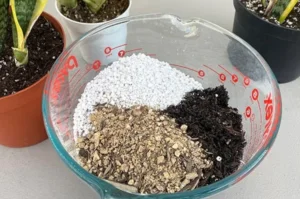Snake plants, scientifically called Dracaena trifasciata (formerly Sansevieria), are popular indoor plants found in homes, offices, and gardens across the world. But many people wonder, are snake plants actually tropical? The answer is yes, they are native to tropical regions of Africa and Asia. But unlike many tropical plants, snake plants are known for their toughness and low-maintenance nature.
In this blog, we’ll explore the tropical roots of snake plants, what that means for their care, and how you can create the best environment for them at home, even if you don’t live in the tropics.
Where Do Snake Plants Originally Come From?
Snake plants naturally grow in West Africa, especially in countries like Nigeria and Congo, as well as parts of southern Asia. These regions have a tropical climate (generally hot and humid) with seasonal rainfall. However, snake plants are not found deep in rainforests. Instead, they grow in drier, rocky areas like grasslands and open spaces with bright, filtered light.
Because of this background, snake plants are well-equipped to handle high temperatures and long dry periods. Their origin gives them a tropical identity, but their survival skills make them quite different from other tropical houseplants.
What Does It Mean to Be a Tropical Plant?
The term “tropical plant” refers to species that thrive in warm climates with temperatures above 60°F (15°C) and no exposure to frost. Most tropical plants need:
- Plenty of moisture
- Consistent warmth
- Moderate to high humidity
- Bright, indirect sunlight
Snake plants do match some of these traits; they enjoy warmth and light, but they don’t rely on humidity or frequent watering. In fact, they are known to survive long periods of neglect, which is rare for a tropical plant.
Climate Preferences of Snake Plants
Because snake plants are used to the tropical regions of Africa, they naturally prefer:
- Temperatures between 70°F and 90°F (21°C to 32°C)
- Dry air or average humidity
- Well-drained soil
- Bright but indirect sunlight
They are not frost-hardy, so if temperatures drop below 50°F (10°C), snake plants can suffer leaf damage or root rot. That’s why they’re usually kept indoors in cooler climates.
Can You Grow Snake Plants Outside the Tropics?
Yes, you can! One of the most impressive things about snake plants is their adaptability. They can grow in various environments as long as they’re protected from cold weather and overwatering.
If you live in a non-tropical zone, just follow these tips:
- Bring them indoors in winter if it gets cold.
- Keep them in a warm room away from cold drafts or frosty windows.
- Use a pot with drainage holes to prevent soggy roots.
- Let the soil dry out between waterings.
Even though they come from tropical climates, snake plants can thrive almost anywhere with proper care.
Do Snake Plants Need Humid Conditions?
Unlike most tropical plants, snake plants are not dependent on high humidity. Their thick, upright leaves are designed to store water, similar to succulents. This means they can handle dry air better than ferns, peace lilies, or calatheas.
Too much humidity can even cause problems like fungal growth or soft, mushy leaves. Normal indoor humidity is usually perfect for them. If the air in your home is extremely dry, you can lightly mist the plant occasionally, but even this is optional.
How to Create a Tropical Feel for Your Snake Plant
If you want to mimic the tropical vibe snake plants are used to, it’s easy:
- Choose the right spot: Place them near a bright window with filtered light.
- Use fast-draining soil: A cactus or succulent mix works best.
- Water wisely: Wait until the top 1–2 inches of soil are dry before watering again.
- Keep them warm: Avoid cold rooms, especially during winter.
- Fertilize gently: During the growing season (spring to early fall), feed once a month with a mild liquid fertilizer.
By doing this, you’re giving your snake plant a mini version of its natural tropical environment, without the need for rainforest-like humidity.
Comparing Snake Plants to Other Tropical Houseplants
Here’s a quick comparison to show how snake plants differ from most tropical plants:
| Feature | Snake Plant | Typical Tropical Plant |
| Water Needs | Low | Moderate to High |
| Humidity Needs | Low to Average | High |
| Light Preference | Bright, indirect | Bright, indirect |
| Cold Tolerance | Very low (not frost-tolerant) | Extremely sensitive |
| Maintenance Level | Very low | Medium to high |
While both types of plants enjoy warmth and light, snake plants stand out for being tough, drought-resistant, and very easy to maintain.
Conclusion
Yes! Snake plants are tropical, originally from warm African and Asian regions. However, they are not your typical tropical plant. They don’t require high humidity or constant care to grow well. They’re known for being nearly indestructible, making them perfect for busy homes and offices.
Their tropical roots give them their beauty and durability, but it’s their ability to adapt that makes snake plants one of the best indoor plants you can own.






